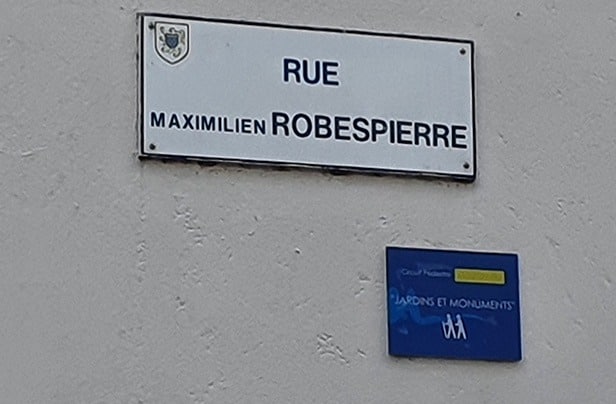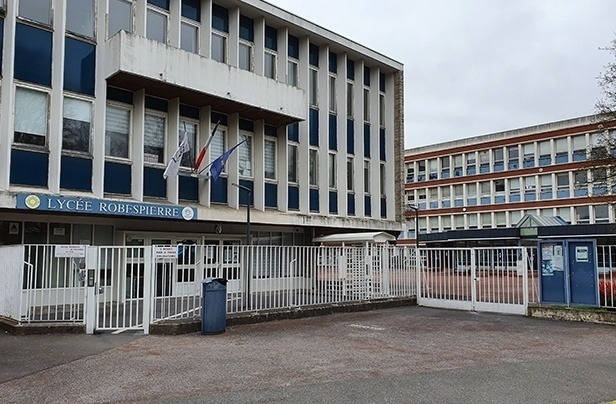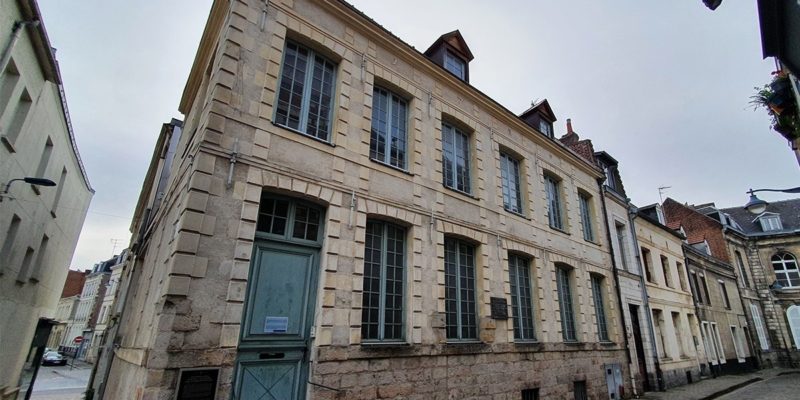An emblematic figure of the French Revolution, Maximilien Marie Isidore de Robespierre was born in Arras on May 6, 1758, into a small noble family.
Soon orphaned at the age of six, he was educated at the Collège des Oratoriens in the Artois capital, then at the Lycée Louis-Le-Grand in Paris.
Fascinated by Rousseau’s ideas, he returned to Arras in 1781, where he lived until 1789, practicing as a lawyer in the house you can still see today when strolling along rue Saint Aubert (above, rue Robespierre).
It has been possible to visit this house for some time now; the residence, closed to the public for many years, was opened to the public through the efforts of an Arrage association, as shown below.
When can I visit Robespierre’s house in Arras?
It’s possible to visit the home of the illustrious revolutionary on Fridays, Saturdays and Sundays (as well as public holidays) from 3pm to 6pm, thanks to the Association des Amis de Robespierre (ARBR).
Please plan your visit well in advance (at least 15 days in advance), as it is by appointment only, by contacting the association on 06 81 72 82 66 or the Arras Tourist Office.
A brochure entitled “In Robespierre’s footsteps” is also available for the visit.  While you’re there, take a look at the Place du Théâtre, the Palais Saint-Vaast and theHôtel de Guînes.
While you’re there, take a look at the Place du Théâtre, the Palais Saint-Vaast and theHôtel de Guînes.
Located at 9 rue Maximilien Robespierre:
Robespierre and Arras
Probably the most famous personality to be born in the town, with the possible exception of Vidocq and Adam de la Halle, Maximilien Robespierre still holds an important place in the hearts of the people of Arras, although it has to be said that he had a rather troubled history during the French Revolution.
However, he profoundly changed the destiny of France, and this in itself is a remarkable aspect on which his supporters rely.
He and Charles De Gaulle (who also stayed in Arras) are among the most remarkable political figures in French history.  The general and technical high school that bears his name can still be seen today, near Boulevard Crespel (between the Citadelle and Rue d’Amiens).
The general and technical high school that bears his name can still be seen today, near Boulevard Crespel (between the Citadelle and Rue d’Amiens).
The Basse Ville (Lower Town), at the foot of the Citadel’s old ramparts, was built from 1751 onwards.
The work took a long time and was completed in 1780.
If we look at the local plan, we see a quadrilateral formed by the Cours de Verdun, Rue Aristide Briand (which is the old medieval city wall), Boulevard Vauban and Boulevard Crespel, with the aforementioned Place Victor Hugo at its center, which has the particularity of being homogeneous in shape and sober and classical in style.
The former Lycée de garçons, originally known as the Hôtel de Beauffort (a prison during the Terror), was acquired by the city in 1820 to house the Collège Municipal de Boys.
But the lycée came much later.
It wasn’t until 1961 and 1962 that the school, thus named Robespierre, underwent its first major changes towards its current configuration, still frequented by many high school students.
It is now located on Avenue des fusillés in Arras.
X.D.
